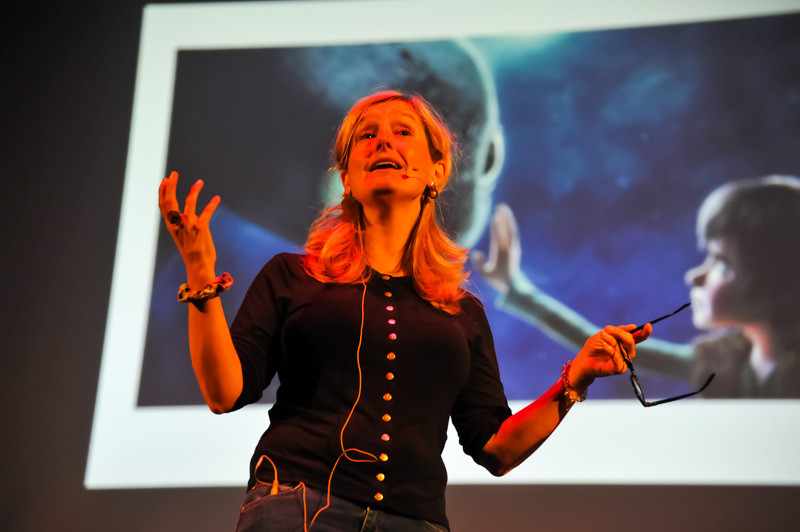
#BathKidsLitFest Day 9: There’s a collective sorrow in the auditorium, a sense of mourning, because with the publication of the twelfth book in the series this is the end of the adventure.
The Forum is packed to capacity with hundreds of children and their parents eagerly awaiting Cressida Cowell, who has taught the world how to train dragons, introduced us to a whole new language, Dragonese, and turned Hiccup Horrendous the Third into an unlikely hero. Yet, although we are all delighted to be here, there’s a collective sorrow in the auditorium, a sense of mourning, because with the publication of the twelfth book in the series this is the end of the adventure.
A whole heap of experiences are behind Cowell’s books but the prompt for writing about Vikings and dragons was the birth of her first child. On being handed your newborn, Cowell says, not only do you realize suddenly that you don’t really know what you’re doing (“how am I going to train this small thing?”), but you also start looking back on your own childhood. And Cowell’s childhood was a blend of conventional life in London and extraordinary summers spent on a tiny, uninhabited island off the west of Scotland.
There was no electricity, no roads and no shops, but across the island was archeological evidence that the Vikings had invaded twelve hundred years ago. It was an “amazing childhood, a dangerous childhood”. On the screen behind her, up flashes an image of a gigantic conger eel that Cowell’s father caught one year. “Conger means ‘really massive’!” says Cowell. Up comes the next image: of a young Cowell eyeballing a super-spiny lobster-ish sort of a marine creature that she caught in a net.
Underwater creatures are great fodder for an illustrator and author. Take a basking shark, mix it with a manta ray and you have a giant bee-eating dragon. Or consider the hideous blobfish from the depths of the darkest oceans, which looks a bit like a grumpy old man. Or how about the Pacific barreleye? It’s a fish with a transparent head, nostrils that look like eyes and a very pretty little mouth (check it out on YouTube – it’s completely nuts). Such weird and wonderful creatures offer rich pickings for the creative mind.
“Writing is like telling a really big lie. The more you stretch it and base it on a tiny grain of truth, the better,” says Cowell. And then, once you are writing “it’s very important to treat your world as though it is real.” She takes the trouble to make her books look as though they’ve been clawed by dragons, splashed with salty seawater, bitten at the edges and splodged with ink.
“Why did you make Hiccup the hero?” one fan asks. “Well, you think the series is asking one kind of question, but actually that changes. He has to be the hero who stands up against the values of his whole world.” And although he and Camicazi (the antithesis of Anne, member of Enid Blyton’s Famous Five and an all-round drip) are small, they never think that things are impossible, and they never give up.
A bit like the ardent fans, who queue patiently for hours after Cowell’s magical talk for her to sign their treasured copies of her books.
Claudia Pugh – Thomas was at Cressida Cowell The Telegraph Bath Children’s Literature Festival 2015
More news